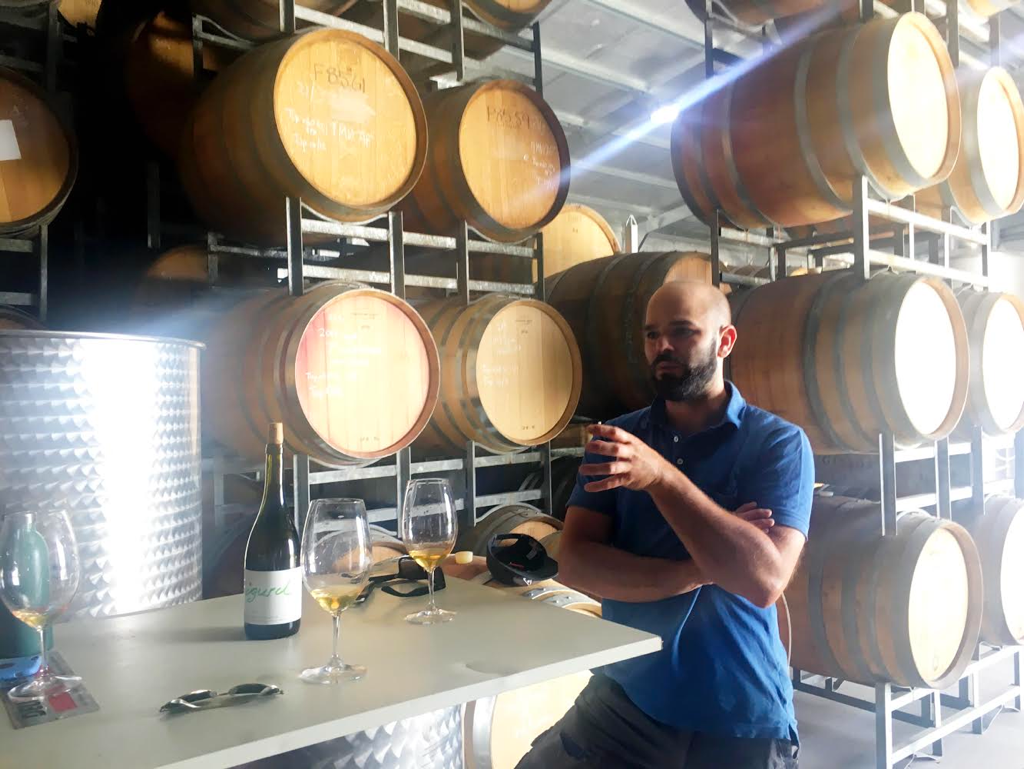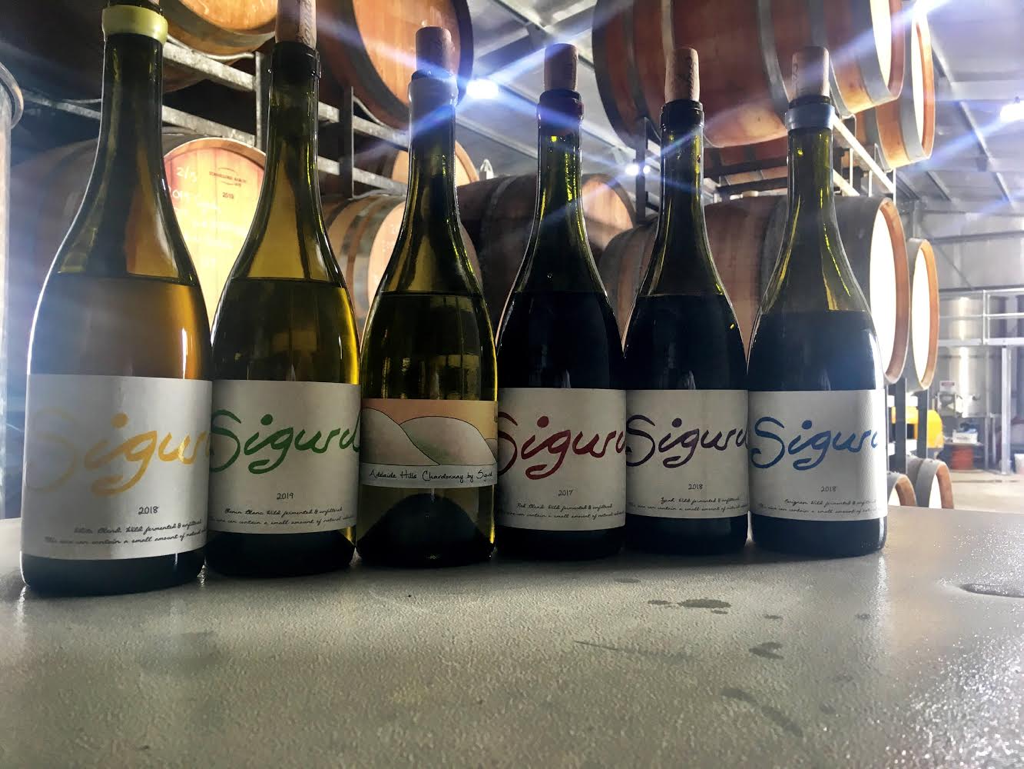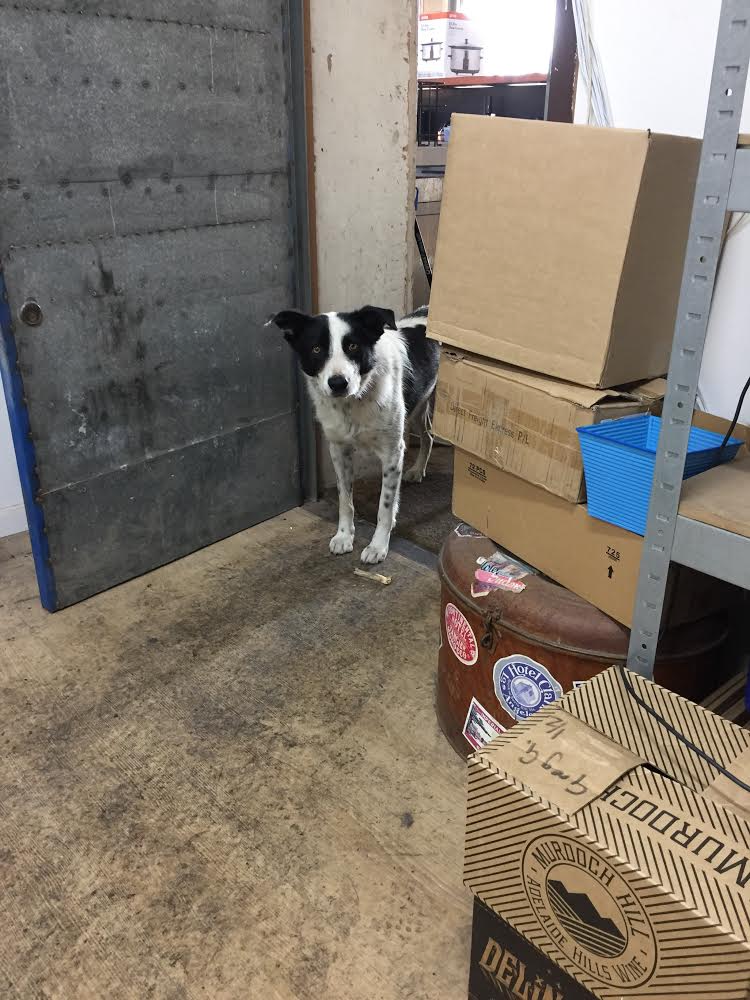|
Dan Graham in the winery with his Clare Valley Chenin Blanc Our erstwhile colleague Oli North recently caught up with Dan Graham, winemaker of Sigurd Wines, and his dog Clive (see photo below). They met at Dan’s winery outside Tanunda, which he shares with David Geyer, to taste the latest releases and chat about the past, present and future of Sigurd... What was your background working in wine before starting Sigurd? I grew up with wine around me in Griffith NSW, a large winegrowing area where my father was a winemaker. It was a big change to what I do now with small batch minimal intervention focused wines! I studied winemaking in Wagga Wagga and then started cruising around the globe working vintages and the snowboard season, before coming back and starting up here. What wines did you start with, and how has it grown? Sigurd was started in 2012 when I produced my first wine, which was actually never released. It has grown really well and organically, so I finally went out on my own in 2017. I’ve gone from 2 tonnes to now around 30, which is sustainable for me. The first wines were the Red and White blends, a GSM and a Riesling/Gewurtz. I was playing with more whole bunch with the reds than you might see around here, and a little skin contact with the whites. It started me off on the path I am on now - always experimenting. I have always bought fruit for Sigurd, dealing with good mates from Hockey that grew grapes in the start and still working with them, I do lease a small plot in the Southern Barossa of Syrah. Anything you're doing differently now compared to the beginning? Not a huge amount, I was working in large wineries at the start so had a pretty strict idea of how you should make wine and I guess from 2013 to now I have found what works for me through trial and error, also a lot of experimentation, and drinking a lot of different wines. How have the last few vintages been? 2017 was a great harvest for us as it was a really fresh vibrant year for the Barossa, great natural acidity and freshness. Though from there a few dry winters have made it pretty tough going, it is something you always need to be prepared for and take each season as a new start otherwise you get left behind and always chasing your tail in regards to quality. Always being out in the vineyards is great for making quick decisions and getting things right.* Old-vine Clare Valley Chenin is not something you see all that often. Can you give a bit of background behind vineyard? The Chenin is around 58-years-old now, the vineyard owner has had the plot for about 30 years. The block is an anomaly to me, it retains great acidity and expression even during the heat, and it’s quite far north in Clare, so a bit cooler. I am amazed that so much was pulled out, but I guess when the Chardonnay craze came it was a pretty simple decision for a vineyard owner. The soil is a red rocky loam over a white clay loam, there is a creek running through the middle of the block. There is also quite a lot of Riesling on the block which also produces some great wines. And what about the vineyards for the other wines? Most of the vineyard areas around Barossa are characterised in a few soil types really. The Riesling and Gewurz I get from Eden Valley, lean granitic soils with a light loam, it gives great acid and finesse and very pretty wines. Syrah, Semillion, and Sauvignon Blanc come from around Williamstown, mostly ironstone rocks and red loam over light coloured clay, the wines are rich aromatically and with good acid. Other reds are from the Northern Barossa; iron loam over deep clays, the soil give very intense wines, with a lot of depth, tho’ they can sometimes lack acidity. What's your 'philosophy' regarding elevage and oak? This is definitely dependent on the year. I am a believer in using new oak but in respect to the strength of fruit used, you have to be careful not to overpower it. I have been slowly building up the quantity of large vats to retain more fruit intensity over time as well, a slow process as they do cost quite a lot! Elevage is really based on the wine, it can vary from a few months to up to 16 months. Some of the drier years we have bigger structure and these need more time to soften out. And what about sulphur? I follow the certified organic rules regarding sulphur. But if the wine’s looking stable I’ll go less, if less stable then closer to the organic guidelines, which I think are pretty generous anyway. Hoping to one day have a crack at zero sulphur but I feel I would need my own winery and vineyard to really achieve that dream. Climate change is obviously the hot topic of conversation regarding the future of Australian wines, how do you see this affecting you? Would you ever consider acidifying? I have had chats with mates about this and the extent of the Australian wine scene of late, all this crazy weather is just making it more and more challenging to make wine in a warm region. I know of a few natural/minimal intervention guys overseas and here that 'touch up’ the acid in wines with very small additions. Currently I am just working on picking some very early grapes as an acid base and working around that, who knows where the climate is heading, best to be open minded and move forward. Do you ever inoculate with yeasts, or for malo? I have a strong belief to use the natural grape yeasts for fermentation and malolactic. I do really love the differences in site and even variety that the naturally occurring yeasts add to the complexity of the wines. Why is buying organic grapes important to you? Sustainability is definitely a bit part of what I was aiming for when I started Sigurd. That means a move to more sustainable agriculture and a big part of that is organic and biodynamic. It is a slow process as the majority of vineyards in the Barossa are conventionally farmed but slowly perceptions are changing and I can move closer to 100% organic fruit. How much involvement do you have with the growers and their vineyards? It has been a long road with in regards to working with growers and hoping to change perceptions about the "less is more" philosophy, but quite a lot of them have been receptive to it. It’s great to be able to drop off wines made from their vineyards and show them what I can do with a minimal intervention approach to winemaking. That really helps me to work more closely with them to produce better fruit, and to help to make the vineyards more sustainable for the future. Would you like to have your own vineyard(s) in the future? Bloody oath! What do you think is exciting in terms of grapes, and areas, in SA for the future? I have always had a big interest in southern French varieties,and also after my latest stint in Italy some of the central and southern Italian varieties. They have great acid retention and drought tolerance - things like Grenache Blanc/Gris and Macabeo are super interesting. A lot of varieties like Trebbiano, Colombard, Chenin, Cinsault and Carignan which can retain acid were mostly pulled out and replaced during the mass craze of Shiraz. Hopefully with a new generation coming through we will see the revival of fruit that can respect the area and not need to be manipulated. What if any changes are coming up for Sigurd? Well I’m always experimenting, so there are always new varieties and trials coming up! One that I’m excited about is adding to my Hills range with a sparkling, so getting pumped for that! Cheers Dan, and all the best to you and Clive for the vintage! *Final note: It’s worth pointing out here that while the last couple of years in South Australia have also seen very hot, dry summers, for a variety of reasons this doesn’t necessarily translate to over-ripe wines. Dan’s most recent releases retain a lucent clarity and acid structure that belie their vintages. Oli North
1 Comment
|
Archives
June 2023
Categories
All
|





